
P.D. GRIFFIN
ENCYCLOPEDIA OF MODERN BRITISH ARMY REGIMENTS
The blue peaked cap has the scarlet band of royal infantry regiments and the 1947 pattern badge - a horse, gorged with a coronet and chain reflexed over its back, rearing up on a globe and superimposed on a flash of lightning, all beneath a crown and scroll inscribed R.E.M.E. The horse with chain symbolises power under control, the lightning flash denotes electrical force.
The REME stable belt is blue with two yellow on red stripes, its clasp raised with the motto Arte et marte (By skill and by fighting). Trade emblems are worn on the sleeve.

Vehicle mechanics of a Light Aid Detachment in Kuwait. (MoD)
Musicians were issued with full dress in 1979. It consists of a blue Victorian uniform and infantry pattern helmet, with scarlet facings and the Royal Engineers' broad scarlet stripe down the trousers' seams.
The corps quick march is a combination of the old army song, Lillieburlero, once used by the BBC News during the Second World War, and the French Aupres de ma Blonde for the trio section.
The REME band was formed in 1944 and became a major staff band in 1971.

WRAC passing-out parade with a variety of cap badges showing destinations to which the women were being sent. They were employed as cooks, drivers, analysts, clerks, police, stewardesses, communications operatives and hairdressers
REME suffered the usual misinterpretation of its initials through its early years. Old soldiers know them as 'Rarely Electrically or Mechanically Efficient', 'Rough Engineering Made Easy', etc. Today the efficiency of the corps in combat support is beyond doubt.
Soldiers belowr lance corporal hold the rank of craftsman and train for one of the corps' trades. Avionics technicians repair and maintain instrument systems on helicopters; aircraft technicians look after everything else on helicopters; electronics technicians maintain and repair all of the army's electronic systems, largely to be found in tanks, self-propelled guns and guided weapons; metalsmiths make tools and equipment parts, and repair vehicle bodywork; armourers repair and maintain the full range of weapons; vehicle mechanics work on heavy armoured track vehicles or light tracked and wheeled vehicles; recovery mechanics use cranes and lifting gear to rescue overturned and broken-down vehicles; and technical stores staff keep track of the thousands of REME special tools and test equipment. The best technicians are selected for artificer rank.
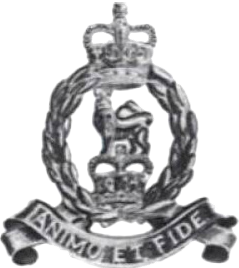
The Adjutant Generals Corps (AGC) was formed in 1992 for the overall management of the army's human resources, through administration, education and discipline. The title comes from the chief administrative officer on the General Staff, whose office goes back to 1673.
The work of the AGC is carried out through four distinct branches, each of which has its own identity and history. The Staff and Personnel Support Branch (SPS) (62 per cent of the AGC) derives from the Royal Army Pay Corps (RAPC), the staff clerks of the Royal Army Ordnance Corps and the major part of the Women's Royal Army Corps (WRAC), which was dissolved in 1992. The large number of female clerks in the SPS Branch has led to AGC being read as 4All Girls Corps'. The Provost Branch (32 per cent) is made up of the Royal Military Police (RMP) and the Military Provost Staff Corps (MPSC). The Educational and Training Services Branch (ETS) (5 per cent) was formerly the Royal Army Educational Corps (RAEC) and the Army Legal Services Branch (ALS) (1 per cent), the Army Legal Corps (ALC).
AGC headquarters and training centre are at Worthy Down in Hampshire, the former home of the Royal Army Pay Corps.
A blue peaked cap with the royal scarlet band honours the four predecessor corps that held a royal title. The Royal Military Police, however, are allowed to keep their distinctive red caps (with black band) for recognition purposes. Berets of green, in a lighter shade than those worn in the WRAC, were chosen for the new corps, except the RMP again, which retains its scarlet berets.
The corps badge consists of a crowned laurel wreath (from the WRAC badge) with the royal crest within, on a scroll worded Animo et fide (With resolution and fidelity). The lion and crown that comprise the royal crest arrived by tradition of the Adjutant Generals Department, the Pay Corps, the Provost Marshal and officers of the Military Police. The Provost Branch is allowed to deviate from corps insignia with the old crown and cypher badges of the RMP and the MPSC, though the new Military Provost Guard Service (MPGS) is represented by the royal crest and title scroll on crossed keys. The Army Legal Services retain the ALC badge - a blindfolded figure of Justice holding a sword and scales, superimposed on a globe and crossed swords surmounted by the royal crest, all contained in a circle inscribed JUSTITIA IN ARMIS. Members of the ETS Branch wear the old torch (of learning) collar badge of the RAEC.
In 1996 AGC musicians' uniform was laid down as infantry pattern: blue helmet and scarlet tunic with blue facings. Mess dress continues the theme with scarlet jackets and blue facings, the standing collar modelled on that worn in the AG Department of the 1890s.

AGC Field Admin Office. (MoD)
The corps quick march, A Pride of Lions, written for the AGC in 1992, draws on the badges of the WRAC, RAPC, the former AG Department, the SPS Branch and the MPGS, all of which contain a lion emblem. The AGC slow march, Greensleeves, came from the WRAC, whose members wore uniforms of green.
The four branches of the corps manifest their independence with official marches of their own. The SPS Branch uses Safroni's Imperial Echoes, the march of the Pay Corps from 1952. Before this date The Inkslingers' marched to Primrose and Blue, the poetic representation of corps colours. Former WRAC marches (authorised in 1959) number The Lass of Richmond Hill, Early One Morning and the pipe tune Nut Brown Maiden.
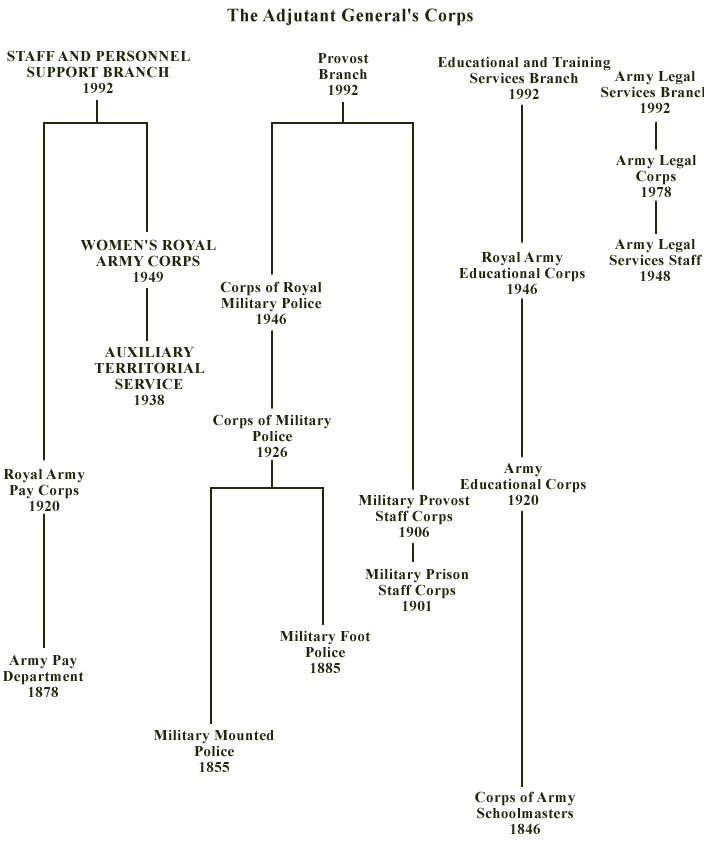
The Provost Branch has three marches: The Watchtower (RMP), The New Colonial (MPS) and Steadfast and True (MPGS).
The Educational and Training Services Branch lists Gaudeamus Igitur (RAEC from 1952) and The Good Comrade.
The ALS Branch is represented by the Army Legal Corps' Scales of Justice, an arrangement of the folk tunes The Soldier Hath No Bedfellows and Stop Poor Sinner, Stop and Think.

'Redcaps' in service dress checking the papers of a Para corporal in battle dress, Aldershot during the 1950s. Mounted RMP patrols for training areas, military events and garrisons were stood down in 1995 in favour of motorcycle patrols. (Aldershot Military Museum)
The Band of the Adjutant General's Corps was formed on a nucleus of musicians from the WRAC band in 1992, which was dissolved when female soldiers were integrated into the other corps of the army. The WRAC Staff Band was formed in 1949, shortly after the formation of the corps, and prided itself on being the only all-girl band. The first girl band was that of the ATS, formed during the Second World War, when the Royal Army Pay Corps managed to raise unofficial bands.
Corps Day (6 April) celebrates the time in 1992 when six corps came together under the colonel commandant of the Adjutant General's Corps. The custom of making a special toast to the corps commandant was inherited from the WRAC, where officers would drink a health to their Commandant-in-Chief, HRH Queen Elizabeth The Queen Mother.
The Staff and Personnel Support Branch (currently 4,500 all ranks) is composed of military clerks whose work embraces the various duties of army clerks prior to 1993. This involves the administration of field records, soldiers' records, casualty reports and disciplinary documents; clerical detachments giving admin support to headquarters and other units; the issue of pay and allowances; the maintenance of MoD public accounts for local suppliers, agencies and Post Office receipts; and operational tasks with other units.
The Provost Branch continues the work of the Royal Military Police and the Military Provost Staff Corps, currently requiring over 2,000 personnel. The Redcaps' deal with the maintenance of discipline and crime prevention, detection and investigation. They need to possess interpersonal skills and professional integrity while being physically strong enough to handle harsh situations. RMP operational support duties range from large-scale traffic control to advising commanders in the field on the movement of front-line troops and supply columns. The Military Provost Staff are stationed mainly at the Military Corrective Training Centre at Colchester Garrison, where they re-train 'soldiers under sentence' in the army's ways, and motivate their prisoners back to a mental and physical readiness for service life before their return to unit. The Military Provost Guard Service, formed in 1997, provides security guards for selected MoD sites.
The Educational and Training Services Branch combines the old teaching practices of the Royal Army Educational Corps with new developmental training, support and resettlement services. They assist all ranks to achieve their academic potential and cover international affairs, war studies, languages, and the general education of young soldiers and the children of service families.
The Army Legal Services Branch follows the duties of the commissioned solicitors and barristers of the Army Legal Corps that was set up after the Second World War. Its officers advise the chain of command on disciplinary matters and prosecute/defend at courts martial. They give legal advice and assistance to serving soldiers and their families, instruct on military law and administer the army's legal system. Their skills cover the complex issues to be found in military, civil and operational law.
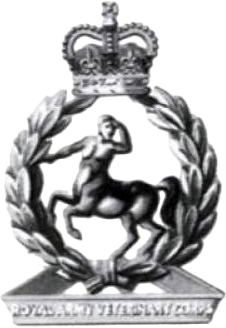
THE ROYAL ARMY VETERINARY CORPS
The Royal Army Veterinary Corps (RAVC) dates back to 1858 when veterinary surgeons attached to cavalry regiments were brought together as the Veterinary Medical Department (VMD). Prior to the Napoleonic Wars, care for army horses was entrusted to regimental farriers. In 1881 the VMD was renamed Army Veterinary Department and ten years later its surgeons were given substantive military ranks. Lower ranks were recruited in 1903 for an Army Veterinary Corps and three years later the two factions were consolidated as one corps.

Dog-handlers from a variety of regiments and services at the Defence Animal Centre. (MoD)
The First World War made great demands on army horses and the AVC grew in proportion to try to provide care for the huge number of animals used and injured in the conflict. In the last year of the war the 'Vets' were honoured with the royal prefix to their title.
In 1946 the RAVC was merged with the Army Remount Service (ARS) and moved from its base at Doncaster Racecourse to the Remount Depot at Melton Mowbray, where equines were to coexist with canines. RAVC headquarters are now located with the Army Medical Services in Camberley but the Melton depot still holds and trains dogs and horses as the Defence Animal Centre.
The blue peaked cap is distinguished with the maroon band first seen in the Army Veterinary Department of Queen Victoria's army. The field service cap is maroon with blue flaps and gold or yellow piping. No. 1 dress is similarly defined with a double maroon stripe down the overalls.
The crowned laurel wreath badge, which contained the corps' AVC monogram, was transplanted with the mythical man/horse figure of Chiron when the title was altered in 1918.
The corps stable belt is blue, with a central maroon band between yellow stripes.
The corps quick march is a combination of Drink Puppy Drink and A Hunting We Will Go, the latter a reference to the Leicestershire depot and the county sport, which was happily indulged in by ARS and RAVC alike. The slow march is Golden Spurs.
The corps deals with military dog care and training (detecting and guarding) and the procurement, stabling, schooling and caring of army horses. The old pack-horse techniques are learned for the odd occasion when the army needs to supply units in difficult and mountainous terrain.

This small corps was created in 1919 with the Corps of Small Arms and Machine Gun Schools. The two were brought together in 1923 to give instruction in weaponry and assumed the Small Arms School Corps (SASC) title six years later. Corps headquarters were relocated from Hythe to the School of Infantry at Warminster in 1969.
Green berets are worn with the 1929 pattern badge, a pair of Lee-Enfield rifles crossed on a Vickers machine gun with a crown above, enclosed in a laurel wreath adorned with a title scroll. This badge superseded the simpler crown over crossed rifles.
March of the Bowmen was chosen for the SASC for its allusion to men and arms.
Corps Day (19 September) commemorates the opening of the School of Musketry at Hythe in 1854.
The corps is responsible for training instructors, the preparation of courses and the selection of firing-range managers. It trials new weapons, advises staff officers and instructs in the skills of weapons training. One in five SASC personnel are officers, promoted from within the corps.

Dentist at war, South Africa, 1900. (NAM)
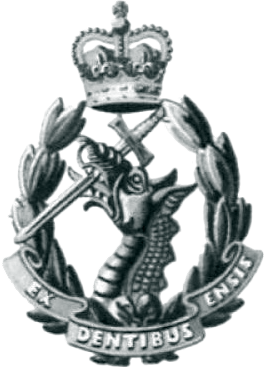
Awareness of the problems caused by a lack of dental health was acute in the days of the musket, when strong incisors and canines were needed to bite open cartridges when loading the firearm. When the musket was phased out in favour of the percussion rifle the army largely lost interest in its soldiers' teeth and neglect was the order of the day. The efficiency of the army was impaired by poor dental health, however, and dentists had to be shipped out to South Africa during the Boer War, but it wasn't until a front-line general got raging toothache in 1914 that dental surgeons were attached to the Royal Army Medical Corps on a permanent basis.
The Army Dental Corps was established in 1921 to treat soldiers and airmen at home and abroad, to enable them to be fit for service. Over 2,000 'Fang-snatchers' served in the Second World War and in 1946 the ADC received its royal title.
Corps headquarters, for a long time at Evelyn Woods Road in Aldershot, are now located with the Army Medical Services in Camberley.
The blue cap has a green band and welt, and the 1948 badge which features a dragon's head, with a sword between its teeth, within a crowned laurel wreath labelled Ex dentibus ensis (From the teeth a sword). The design was inspired by Greek mythology, in which Cadmus slew a dragon and sowed its teeth, which grew as the martial Sparti race. On the beret the badge is worn on a green backing.
Field service caps and stable belts are coloured emerald green, blue and cherry red. In service dress all ranks wear the green lanyard introduced in 1952. Green jerseys are supplied to officers and warrant officers for barrack dress.
The corps march, Green Facings, which conforms to RADC dress specifications, was arranged for the corps in 1953 and adopted in the following year. It brings together the old English airs Green Broom and Greensleeves.
The Corps Weekend in September is when members of the RADC Association can meet to march and remember in Aldershot. After the loval toast has been taken another is made to the Colonel-in-Chief, HRH the Duchess of Gloucester. Like the RAMC the RADC bear arms for personal protection only, in accordance with the Geneva Convention. On parade, swords and bayonets are carried but not drawn.
Today, dental surgeons (officers) supported by technicians and surgery assistants (other ranks), serve in camp hospitals, field centres and laboratories, mobile teams and field ambulances. They are responsible for primary dental care for soldiers, entitled civilians and their dependants across the world.

The 'Int Corps' was formed in 1940 for the gathering and interpreting of intelligence concerning enemy movements in the Second World War. It soon expanded to employ 11,000 effectives, some of whom were required to work under cover in occupied countries. Members were not classed as Regular Army until 1957. HQ and training are at Chicksands in Bedfordshire.
No. 1 dress 'blues' have a Cypress green cap band, shoulder piping and trouser stripe. Berets are green also. The corps badge combines a crown and rose (the ancient symbol of silence and trust) flanked by laurel leaves and a title scroll.

Intelligence analysts following up a request for information, 2005
The quick march, The Rose and the Laurel, based on two folk melodies, was adopted in 1954. The ancient Trumpet Tune (and Ayre) is the corps slow march.
The 'Int Corps' - motto Manui dat cognito (Knowledge gives strength to the arm) - builds on the code-breaking work initiated by Wellington's staff officers. Members specialise in linguistics, operational intelligence (the gathering of knowledge about the adversary and its activities, capabilities and organisation), counter-intelligence, human intelligence, imagery analysis, signal intelligence and electronic warfare. Information has to be extracted from numerous sources, some believable, others not.
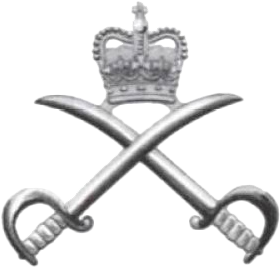
THE ARMY PHYSICAL TRAINING CORPS
The Army Physical Training Corps (APTC), formed in 1940, originated with the Army Gymnastic Staff of 1860, which provided the corps motto, Mens sana in corpore sano (A healthy mind in a healthy body). This staff, which comprised a major and twelve NCOs (the 'Twelve Apostles'), were so successful in their work that a gymnasium was ordered for every garrison by 1862.
Headquarters established at Aldershot in 1940 are now to be found at Trenchard Lines near Pewsey in Wiltshire.
The blue peaked cap bears the corps badge: two swords, crossed and ensigned with a crown.
No. 1 dress 'blues' are distinguished by scarlet shoulder piping and trouser stripes. The twelve buttons on the officers' mess waistcoats immortalise the 'Twelve Apostles' of 1860.
The corps march, Be Fit, appeared in 1944 with words from Kipling's Land and Sea Tales.
The original disciplines of gymnastics, fencing and boxing are still taught alongside modern requirements. Instructors are drawn from all army units and trained for detachment to regiments stationed around the world, where they supervise sports programmes, PT sessions, route marches and combat obstacle courses.

PT instructor attached to the King's Own Royal Border Regiment wearing the beret of that regiment and the dreaded kit of his own. (Grenadier Publishing)

QUEEN ALEXANDRA'S ROYAL ARMY NURSING CORPS
The Army Nursing Service, formed in 1881, gained the title Queen Alexandra's Imperial Military Nursing Service (QAIMNS) in 1902. In 1897 the first nursing reserves came into being, organised by Princess Christian, a daughter of the Queen. Both elements were sent out to South Africa in 1899 in support of army medical teams on campaign.

First World War medical re-enactment group in 2005; QAIMNS nurse making tea
In 1949 the QAIMNS was combined with the Territorial Army Nursing Service tinder the title Queen Alexandra's Royal Army Nursing Corps (QARANC), with headquarters at Aldershot. Today they are with the Army Medical Services at Camberley.
We have much more interesting information on this site.
Click MENU to check it out!
∎ cartalana.com© 2009-2025 ∎ mailto: cartalana@cartalana.com